First meet focuses on collaborations for inclusive growth
Going beyond seminars and forums, in a not-quite-formal environment, sitting across a common table, Silver Circle patrons discussed at length a couple of subjects that otherwise do not get much attention and generally do not see a resolution. They had gathered for a morning of intense discussions at Jindal Centre in New Delhi, on 8 May 2015.
So, can two or more companies/corporate foundations join hands for a common social responsibility project?
This was the first subject of discussion among Silver Circle patrons, who are primarily decision makers or decision influencers at social arms of corporate groups or non-profit organizations. Deepikaa Jindal, chairperson of Jindal Stainless Foundation, the host of the meet, opened the conversation and set the tempo for the discussion saying that the foundation was open to joining hands with companies that could add value to social initiatives.
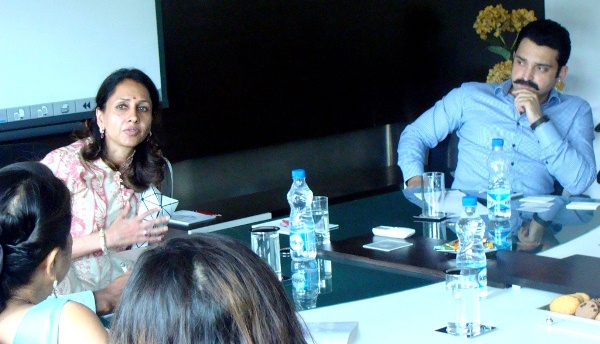
Ms Jindal observed that two companies, even if they were competitors in business, could always join hands if their CSR focus was in sync and if they operated in the same region. Such collaboration would certainly add value to the initiative. Welcoming the Silver Circle patrons in their boardroom, Ms Jindal said that the first step towards such associations and partnerships was to have ‘open’ conversations across the table. She appreciated CauseBecause’s efforts in bringing leaders together and forming a Circle that would deliberate upon such subjects.
Perspective 1
Silver Circle patron Rajiv Williams, group head – CSR at Jindal Stainless, moderated the lively discussion and started by presenting the challenges that he believed could be holding companies from joining hands for social initiatives. He believed that the first challenge was one of ‘who takes the credit’. This is a real bone of contention, considering most CSR initiatives have the branding compulsion and marketing departments too have stakes in them. Williams also underlined the ‘suspicion’ element among companies – perpetrated by a lack of trust as well as a lack of fundamental respect for each other. That becomes a roadblock in realizing the idea of companies joining hands for common social programmes.
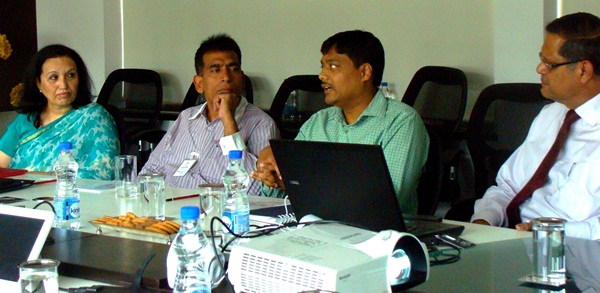
Mr Williams said that if an independent entity mediated between two or more companies and played the role of a confidante for a particular project, such associations could become realistic. He also affirmed that such partnerships would help in inclusive growth of beneficiaries of social programmes.
Perspective 2
Circle patron Mohini Daljeet Singh, CEO, Max India Foundation, agreed with Mr Williams that branding and marketing did come into play when their CSR activation was on. However, it does not mean that the intent and the impact of the project are compromised for the sake of brand-building. At the same time, the challenge of image management was a reality for the organization. Mohini explained how they ensured that all precautions were taken while immunizing underprivileged children, one of Max India Foundation’s flagship initiatives – a single immunization gone wrong would not only tarnish the Max brand name but also negate all the good work the foundation had done in a decade.
Mohini assured that if a corporate entity with the right intent and real compassion wanted to partner them for a joint programme, she would be more than willing to associate. She also advised the Circle that such discussions should in future be attended by policymakers as potential partnerships or even the intent to collaborate often do not materialize because the message in its entirety does not reach the ministries and many a times the policy framework is not suitable.
Perspective 3
Circle patron Ritesh Sinha, director – CSR at DLF Foundation, echoed the opinion of his co-patrons and added that the issues relating to ‘trust’ among companies (who takes the credit, etc., for the project) could all be sorted out if the decision makers agreed to come together and discuss those issues in the first place. He appreciated the fact that such discussions had begun and that they were all sitting together with development sector organizations, trying to find a way towards forming larger, better and impactful relationships.
Sinha assured that DLF Foundation was open to such partnerships and would be more than happy to welcome another business house in achieving value addition for their ongoing projects; same way, they would be open to approaching another business house if the association held the promise of meaningful impact.
Perspective 4
Circle patron Suresh Reddy, director, SRF Foundation, gave examples of projects wherein they joined hands with other companies and created holistic development projects focused at children. He admitted that a few organizations looking for some extra brand mileage had their public-relations agencies issuing media releases (one even got their banners put up within the school premises), but they did not mind that so long as the project was not negatively affected.
Perspective 5
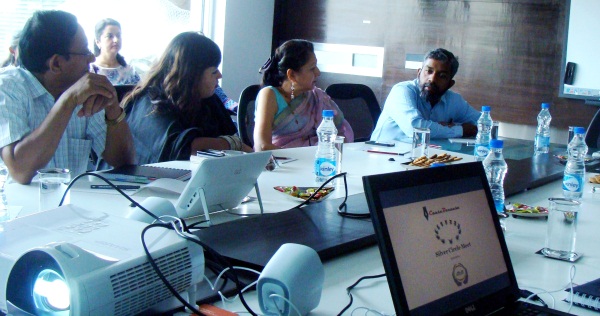
Representing the development sector, Circle patron Siddhartha Upadhyay, founder and secretary general of Stairs, insisted that the communication of social initiatives was an important element and that brands must inform their stakeholders about their CSR programmes. Upadhyay, who also heads a leading brand-communication agency, said that stories around the social initiatives of a brand must reach people as that not only helps in image management but also keeps the corporate on their toes and conscious about doing something meaningful. The corporate doing CSR in full public view will always be aware that they are being watched; faulty claims can taint the brand’s image.
In Upadhyay’s view, another significant outcome of CSR communication is that innovative and impactful projects get noticed and more companies may then want to replicate or create similar projects, which ultimately helps the cause and multiplies the impact. The same thought was presented by Gurpreet Kaur, founder, Action in Community & Training, who said that they get to know about CSR initiatives of various companies via their positive stories. This also helps them in preparing their projects and approaching the right corporate with the right project, which is in sync with their vision and policy.
Other Circle patrons and members appreciated the idea of having corporates joining hands for common CSR projects and also shared similar views on the significance of CSR stories. All patrons agreed that CSR communication must go out and people must know who is doing what and how. However, the corporate should not have ‘competition’ in mind as far as CSR programmes are concerned – they should go beyond looking at the numbers in terms of X beneficiaries reached and Y trees planted (thereby saying in not so subtle a manner that the competition is far behind), and instead declare that together they made a difference.
Is it possible to have a holistic development approach in all programmes?
For example, can an environment-focused project be clubbed with women empowerment, sports development or healthcare awareness projects?
With a room full of heads of social organizations engaged in various areas of work “from food for children to empowering women to sports for development, and from environment to family planning, old-age securityand disability – the subject turned out to be quite thought-provoking.
When questioned if some of the Circle patrons from non-profit organizations could merge, focus on their thematic areas, adopt the same set of beneficiaries and create a common project, almost all of them seemed convinced that it made sense. However, each one of them underlined one challenge or an area of difficulty in implementing the idea.
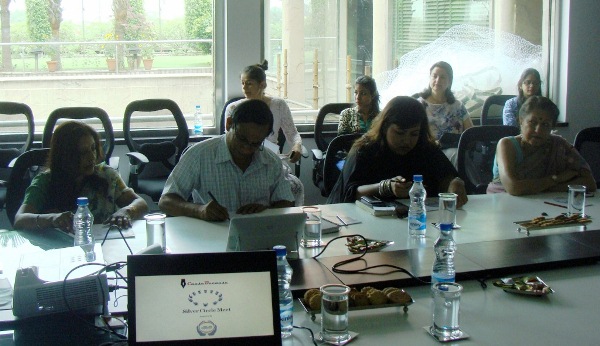
Interestingly, even corporate leaders agreed that if such a project with a holistic approach was presented to them, they would be more than willing to support it. At the same time, they thought that there had to be one central agency/organization as the common point of reference for them to deal with in such multi-organization projects. Thus, if the project involves five non-profits, one of them or a third party should be in the role of keeping them together and reporting to/interacting with the funding agency.
Perspective 1
Non-profits agreed that while the holistic approach was a better idea, their existing donations, grants and funding primarily came for the work they did – those funds helped them sustain too. So, as long as these joint projects got them a substantial sustaining fund, which of course would be a part of the new ‘holistic approach’ project, they would have no issues coming together.
Perspective 2
Merged non-profits will have to be conscious that if five of them are working in five different areas, their beneficiaries are common. Failure at one organization’s end could mean failure of the project. A common integrating agency or a facilitator is a must for such projects to be a success.
Perspective 3
Should it be that such mergers happen first and the project be conceptualized, before approaching the funding agency? Or should it be the other way round? This was an interesting talk point as the leaders seemed enthusiastic about the idea but seemed lost in a chicken-and-egg debate. They finally concluded that unless the project was conceptualized well and had a credible leader, they would not be in a position to approach funding agencies. Moreover, even if such mergers had to be done for a particular project, there needed to be a common collaborator who would bring them together and take care of their interests while addressing areas of concerns and priorities.
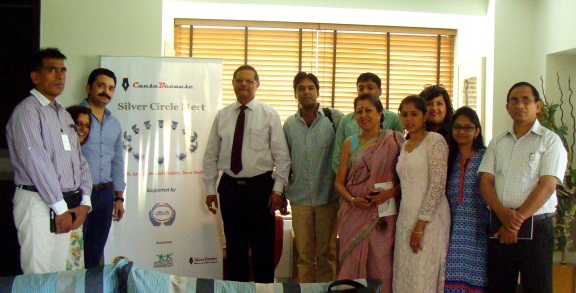
CauseBecause thoughts – things to do
- While Team CauseBecause succeeded in conceptualizing and establishing the Silver Circle platform, the discussions in the future will also involve decision makers in the government and relevant departments.
- Team CauseBecause stands as a facilitator to connect each Circle member with one another if synergies are found.
- The team will continue to interact with Circle patrons to understand their existing/planned initiatives and issues, and communicate the same among patrons.
- CauseBecause newsletters may be utilized by Circle members to propagate their initiatives and solicit the opinion of experts on the same.

